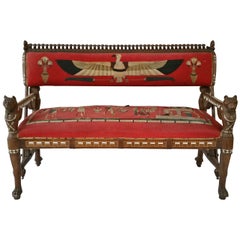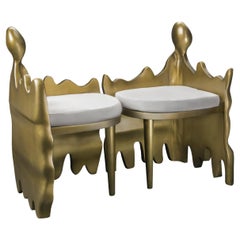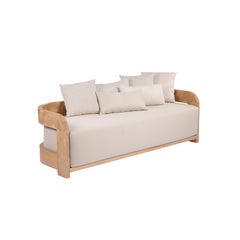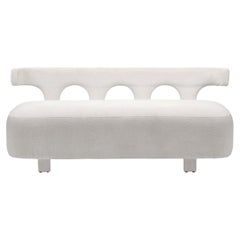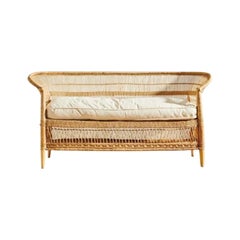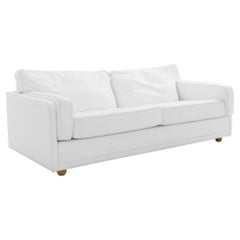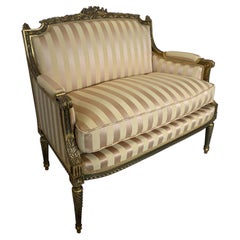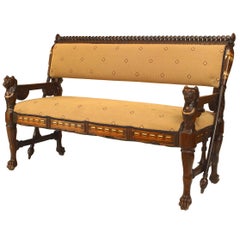Egyptian Loveseats
to
1
3
1
Height
to
Width
to
Depth
to
3
3
2
2
2
2
2
2
2
2
2
2
2
1
3
4
3
1
1
1
642
779
329
307
297
4
2
2
2
Place of Origin: Egyptian
Rare Egyptian Revival Carved and Inlaid Rosewood Loveseat
Located in Buffalo, NY
Egyptian Revival loveseat composed of hardwood inlaid with bone,ebony, Upholstered in a very rare felt hand stitched applique fabric in Egyptian motif,,original,The loveseat features reversable back...
Category
1880s Egyptian Revival Antique Egyptian Loveseats
Materials
Fabric, Bone, Hardwood, Ebony
HELLO- Wood Chair
Located in Giza Governorate, EG
Materials: Wood
Dimensions: 112Wx55Dx93.5H cm
At first, the were two separate beings unaware of what they could be, he reached for her said “hello” , gave her a balloon, she accepte...
Category
2010s Egyptian Loveseats
Materials
Wood
$4,900 / set
Hand-Carved Massive Oak Outdoor Sofa with Rounded Armrests and Oversized Cushion
By Shewekar Elgharably
Located in Cairo, EG
Hand-carved massive oak outdoor sofa with rounded armrests and oversized cushion.
If the feeling of elation were a tangible item, it would be this o...
Category
2010s Modern Egyptian Loveseats
Materials
Upholstery, Oak
White Curvy Upholstered Sofa Inspired By Egypt's Nubian Architecture
By Shewekar Elgharably
Located in Cairo, EG
White curvy upholstered sofa inspired by Egypt's Nubian Architecture
The Nubia set is the heart of this Nubian collection. Nubian houses are typically built for entire families an...
Category
2010s Modern Egyptian Loveseats
Materials
Fabric, Wood
Related Items
Handwoven Malawi Cane Sofa in Traditional Weave with White Linen Cushion
Located in Brooklyn, NY
This sofa ever so artfully combines handwoven cane and solid wood with a plush linen and down-filled cushion, bringing long-lasting comfort to nearly any interior setting. We think i...
Category
21st Century and Contemporary Organic Modern Egyptian Loveseats
Materials
Wood, Linen, Cane, Rattan
1980s Poltrona Frau White Leather Sofa
Located in High Point, NC
A 1980s white leather sofa from Italian furniture makers Poltrona Frau. The brilliant white of the leather brings a crisp polish to the deep-seated...
Category
1980s Mid-Century Modern Vintage Egyptian Loveseats
Materials
Leather
Fuyu Armless Chair, Loveseat
By LAGU
Located in İSTANBUL, TR
With its unique design, FUYU armchair brings together the wide seating and naturalness that you cannot find in other single sofas…
Measures: Length: 47.2'' / Depth: 53.2'' / Height: 35.4'' / Seat Height: 17.7''
Weight: 41.6 kg
-Spring upholstery
-32 DNS HR Foam
-1st grade alder frame.
UPHOLSTERED PRODUCT USE AND CARE
Dry clean your product and refer to the sales form for special care instructions.
Call us for re-upholstery of your product.
When choosing your fabric, submit your flammability certificate request.
Avoid using upholstery...
Category
2010s Organic Modern Egyptian Loveseats
Materials
Fabric, Hardwood, Foam, Upholstery, Cotton, Bouclé
Organic Modern Twins Curved Sofa, White Bouclé, Handmade Portugal by Greenapple
By Greenapple
Located in Lisboa, PT
Twins sofa, Contemporary Collection, Handcrafted in Portugal - Europe by Greenapple.
Designed by Rute Martins for the Contemporary Collection, the Twins cu...
Category
21st Century and Contemporary Modern Egyptian Loveseats
Materials
Fabric, Wood, Bouclé
$5,719 Sale Price / item
50% Off
H 28.35 in W 86.62 in D 44.1 in
Authentic Rare Eastlake Aesthetic Movement Ornate Carved Walnut Loveseat
Located in Hopewell, NJ
An Eastlake period sofa loveseat or settee centered with a stunning pierced crest having a pierced floral motif with the shape mirrored in the arm pediments. Beautiful outward rolled arms are finished with wooden panels carved with scrolled details, all over lovely apron and tapered legs. Original upholstery in excellent condition - this is the real deal...
Category
Late 19th Century Eastlake Antique Egyptian Loveseats
Materials
Upholstery, Walnut
$2,240 Sale Price
30% Off
H 36.5 in W 53 in D 23 in
Kartell Uncle Jack Sofa by Philippe Starck
By Kartell, Philippe Starck
Located in Brooklyn, NY
Kartell presents Uncle Jack, the revolutionary single mould transparent polycarbonate sofa signed by Philippe Starck. It is 190 cm long in a single block we...
Category
21st Century and Contemporary Modern Egyptian Loveseats
Materials
Plastic
Kartell Bubble Club 2-Seat Sofa in Zinc White by Philippe Starck
By Kartell, Philippe Starck
Located in Brooklyn, NY
A veritable icon made by Kartell, the mass-tinted polypropylene Bubble Club sofa was a Pioneer of a new concept in furniture accessories: the Industrial sofa made entirely of plastic...
Category
21st Century and Contemporary Modern Egyptian Loveseats
Materials
Plastic
$1,727 / item
H 19.88 in W 74.65 in D 29.5 in
Mario Bellini Le Bambole Sofa, Upholstered in Alpaca, B&B Italia, 1970s
By B&B Italia, Mario Bellini
Located in Lewes, East Sussex
A beautiful Mario Bellini Le Bambole sofa, produced by B&B Italia, Italy in the 1970s, newly upholstered in luxurious 100% alpaca. Marked on the underside. Fast shipping worldwide.
Category
Mid-20th Century Mid-Century Modern Egyptian Loveseats
Materials
Alpaca
$11,028
H 29.53 in W 68.9 in D 37.41 in
Pair of Louis XVI Style Carved and Laqué Gilded Bergère Settees or Loveseats
Located in Los Angeles, CA
A pair of Louis XVI style carved and Laqué gilded bergère settees. The elegant pair of carved loveseats, upholstered in a blue velvet, with padded backs and sides and a cushion seat,...
Category
21st Century and Contemporary Louis XVI Egyptian Loveseats
Materials
Wood
$24,950 / set
H 38 in W 66 in D 28 in
1950s, Oak With Brown Velvet Sofa from Denmark
Located in Silvolde, Gelderland
Beautiful two-seat sofa made in Denmark.
This sofa is made of oakwood with brown velvet cushions.
It is in a very nice condition.
Period: 1950s.
Please note!
Because Shipping Costs ...
Category
1950s Mid-Century Modern Vintage Egyptian Loveseats
Materials
Oak
Mario Bellini Le Bambole Sofa, Upholstered in Alpaca, B&B Italia, 1970s
By Mario Bellini, B&B Italia
Located in Lewes, East Sussex
A beautiful Mario Bellini Le Bambole sofa, newly upholstered in luxury cream alpaca velvet, produced by B&B Italia, Italy in the 1970s. Marked on the underside. Fast shipping world...
Category
Mid-20th Century Mid-Century Modern Egyptian Loveseats
Materials
Alpaca
$11,028
H 29.53 in W 66.93 in D 33.86 in
Heide Rolf Elegant Vintage Wood and Bouclé Sofa for ICF
By ICF Milano 1
Located in Milano, IT
Rare and beautiful 7-seater sofa designed in the 1960s by Heide Rolf for the fine ICF production.
The sofa consists of 7 seats in total and a coffee table.
The frame is entirely ma...
Category
1960s Mid-Century Modern Vintage Egyptian Loveseats
Materials
Bouclé, Wood
$17,340 Sale Price
20% Off
H 25.99 in W 143.71 in D 34.65 in
Previously Available Items
Diminutive Louis XVI Style Giltwood Settee
Located in Lambertville, NJ
A diminutive giltwood settee in the Louis XVI style. The gold frame with carved detail all along the frame. The upholstery is newly covered in a soft gold beige satin stripe damask.
Category
Mid-20th Century Louis XVI Egyptian Loveseats
Materials
Damask, Giltwood
A Rare Egyptian Revival Loveseat
Located in Queens, NY
Egyptian Revival loveseat composed of ebony and upholstered in a beige Moorish-inspired textile. The loveseat features a reversible back and decorative Egyptian carvings, such as dog...
Category
Early 20th Century Egyptian Egyptian Loveseats
Materials
Ebony, Fabric
Recently Viewed
View AllMore Ways To Browse
Gondola Loveseat
Ligne Roset Moel
Loveseat Kravet
Mcguire Loveseat
Patterned Loveseat
Roll Arm Loveseat
Stephen Kenn Outdoor Sectional
Togo Ligne Roset Loveseat
Vintage 2 Seater Loveseat
Vintage Wicker Loveseat
Wicker Love Seat
Wing Loveseat
1950s Mahogany Loveseats
Baroque Loveseat
Chapo Loveseat
Corvette Montis
Distressed Leather Loveseat
Double Sided Loveseat
